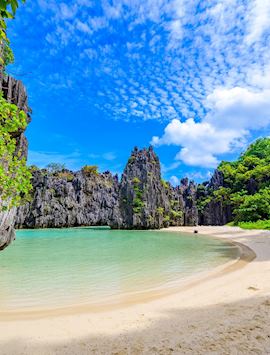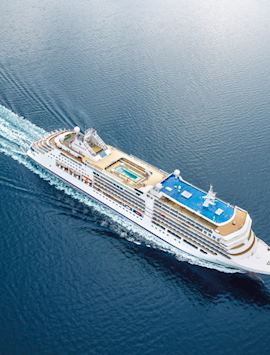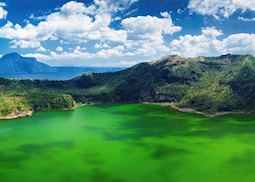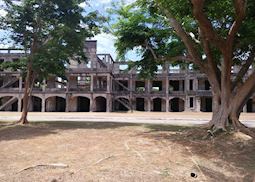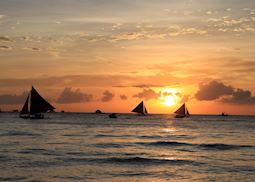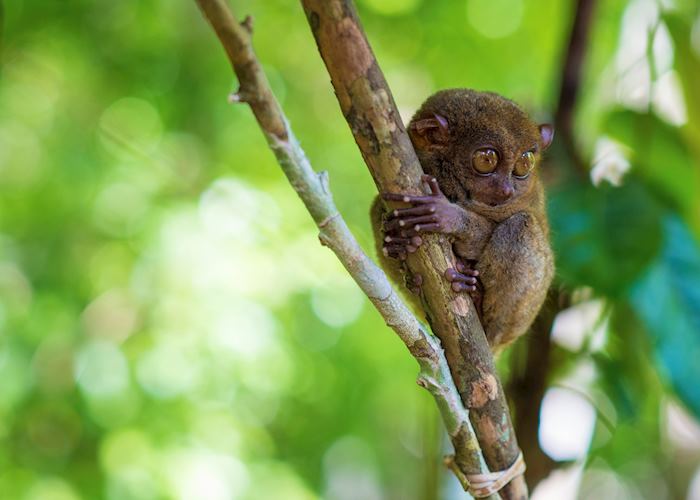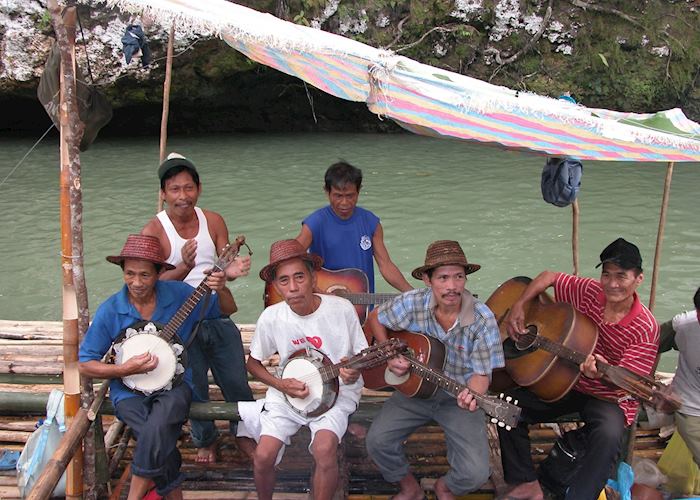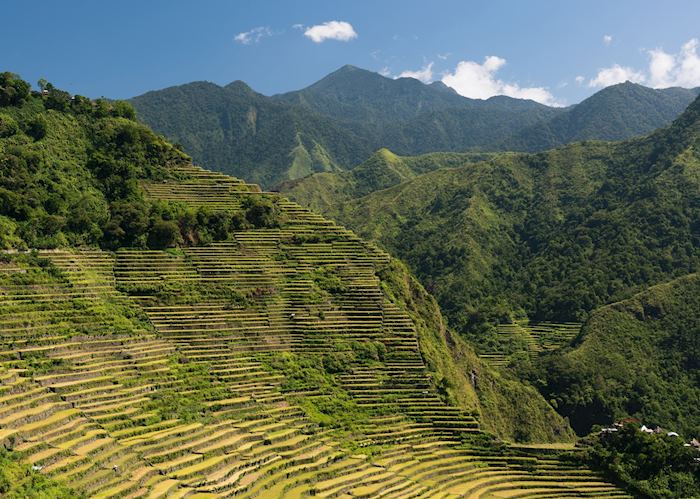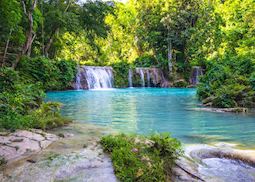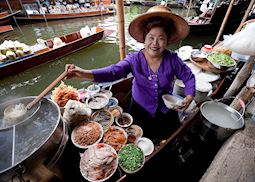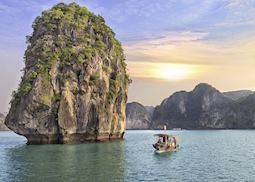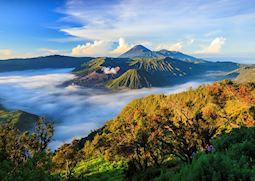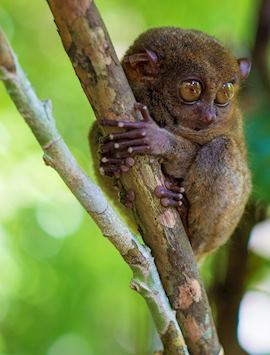
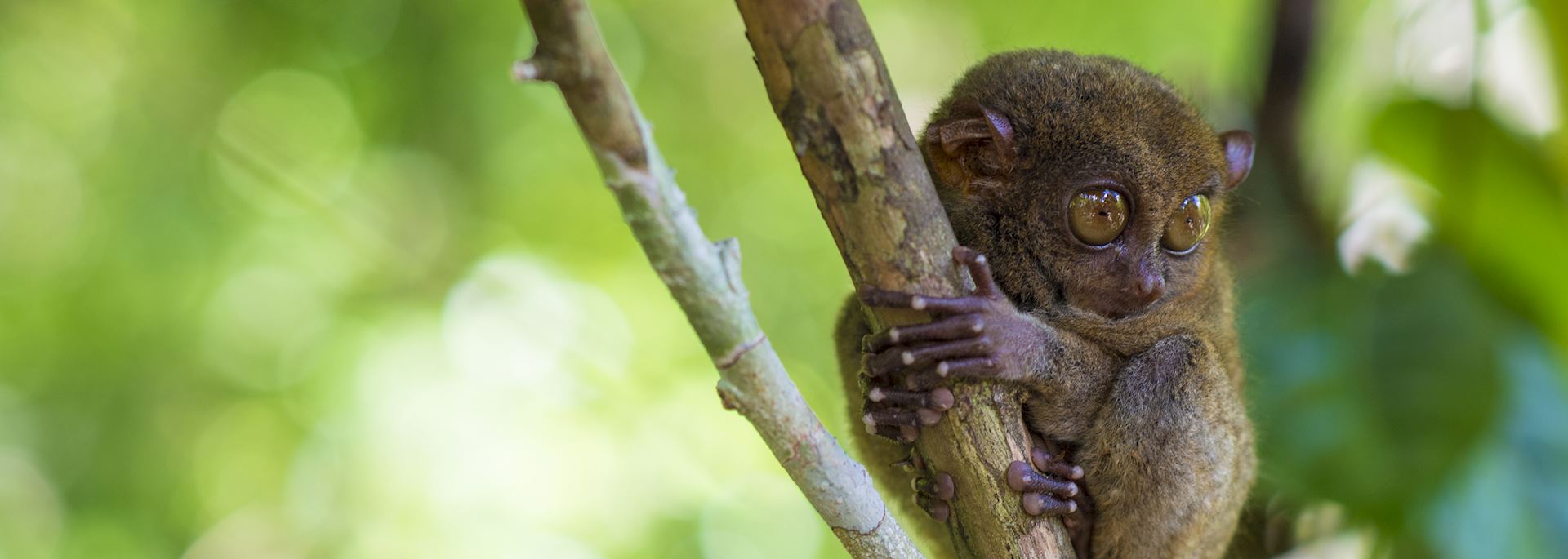
Tailor-made Philippines holidays shaped around your passions
Culturally and geographically removed from the rest of Southeast Asia, this green archipelago is best known for its pristine beaches. But, moving inland, there are many other places to visit on your holiday in the Philippines, as our specialists have discovered from their exploratory trips there.
With more than 7,000 islands, it can be hard to decide what to see in the Philippines. You might take a few days in Manila to explore the capital’s heady mix of Asian, Spanish and Middle Eastern cultures. Continue south and you can visit the rumbling slopes of Taal Volcano or the emerald crater lakes of Luzon, while in the north you can discover the vast and ancient rice terraces of Banaue. And, reserving the end of your trip for the Philippines’ telltale white sands, you can enjoy world-class diving through the World War II wrecks off Coron or the bright corals of Malapascua.
Reduced fares currently available through our airline partners
We have a number of reduced fares available with selected airline partners. Click below for further details on booking and travel periods.
View offersSuggested tours for the Philippines
These tours give you a starting point for what your holiday to the Philippines could entail. Treat them as inspiration, as each trip is created uniquely for you.
Suggested activities for the Philippines
Whatever your interests, our specialists will build activities into your trip that connect to how you want to experience the Philippines.
-
Full day tour to Taal Lake & Taal Volcano ![Taal volcano]()
Full day tour to Taal Lake & Taal Volcano
ManilaFull day tour to Taal Lake & Taal Volcano
Taal Volcano and Taal Lake lie approximately 70 kilometres south of Manila. Once you reach the shore of the lake you will board an outrigger boat for the 30-minute trip across the lake to Taal Volcano Island, from where you'll trek uphill through the hardened black lava to the crater rim.
View details -
Day trip to Corregidor ![One mile barracks, Corregidor]()
Day trip to Corregidor
ManilaDay trip to Corregidor
This fascinating offshore island fortress, 40 kilometres west of Manila, is a treasure trove of information for history buffs.
View details -
A day's sailing around Boracay ![Sunset, Boracay, Philippines]()
A day's sailing around Boracay
BoracayA day's sailing around Boracay
On this one day tour you will cruise around the island of Boracay on board a luxury 13-metre catamaran. Cruise includes lunch on board, beer and soft drinks, swimming and snorkelling.
View details
Why travel with Audley?
- 100% tailor-made tours
- Fully protected travel
- Established for over 25 years
- 98% of our clients would recommend us
Best time to visit
Our specialists advise on the best months to visit the Philippines, including information about climate, events and festivals.
Request our brochure
Covering all seven continents, The World Your Way shows you how you can see the world with us. It features trip ideas from our specialists alongside hand-picked stays and experiences, and introduces our approach to creating meaningful travel experiences.
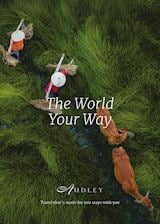
Useful information for planning your holiday in the Philippines
The two main languages spoken in the Philippines are Tagalog, which is most common in the north, and Cebuano, which is spoken in the south. More than 100 other languages and dialects are also spoken in the Philippines, including Spanish, which is used across the country. Most Filipinos are bilingual, speaking at least Tagalog/Cebuano and another language most likely to be English.
The currency of the Philippines is the Philippine piso (PHP), although it’s often called the peso in English. The US dollar is also a widely accepted currency. Credit cards are widely accepted in major cities and popular tourist destinations, and you’ll find ATMs in all cities and many smaller towns.
You should try adobo, made from chicken or pork simmered in soy and vinegar with garlic and black pepper, lechon de leche (roasted suckling pig) and crispy pata (deep fried pig’s knuckles or trotters). Pusit (dried squid) and dried fish are eaten as a snack, often dipped in vinegar or a ubiquitous coconut, soy, vinegar, and fish sauce.
Desserts include the bright purple puto bumbong rice cake, bibingka, a coconut and egg cake cooked in a clay pot, and halo halo, a type of ice-cream sundae. Fresh coconut juice is widely sold, and local craft beer is growing in popularity. Tanduay (local rum) and tapuy (sweet rice wine) are worth trying, as is lambanog, a potent coconut liqueur.
Light, casual clothes are recommended in the Philippines, although you’ll need something warmer if you’re travelling into the mountains. You should also dress modestly and cover your knees and shoulders when visiting churches and temples out of respect.
A tip of 10% is expected in restaurants in the Philippines, but if a service charge is already included an additional 5% is appropriate. If you get a taxi with a working meter, round up the amount, and although guides and drivers will appreciate a tip, this is at your discretion.
For the latest travel advice for the Philippines, including entry requirements, health information, and the safety and security situation, please refer to the Foreign, Commonwealth & Development Office website.
In the Philippines, you can visit rumbling volcanoes, pristine beaches, and lush rice terraces, explore vibrant cities, or have a backcountry adventure. You could explore the capital’s storied past on a guided walk though the historic Intramuros district in Manila, see active volcanoes and emerald crater lakes, visit a local family to learn how to cook, or gaze out at the amphitheatre-like rice terraces on a trek to Batad.
The Philippines has many facets and whether you want to see dolphins and whales, visit a traditional village to learn about the Ifugao culture, or enjoy an island-hopping adventure around Boracay, you’ll find plenty to do when you’re looking for something more active than a day on a white-sand beach.
From private island escapes to simple beach-side bungalows, the Philippines offers a good range of places to stay in almost all locations. You could choose to stay in a large-scale modern hotel in Manila or opt for something more intimate such as a restored urban villa decked out in contemporary style. On the coast, you’ll have a choice of thatched cabanas at a dedicated dive resort, overwater cottages in secluded coves, or an escape to an exclusive resort on a private island with idyllic views. In some areas, such as northern Luzon, options may be more limited, but our country specialists have sought out the best country inns to get you close to the most significant sights in the area.
It takes around 16 hours to fly from the UK to the Philippines.
The time zone in the Philippines is UTC+8 hours. The Philippines does not observe Daylight Savings Time.
Private transfers are the best way to get around locally in the Philippines. If you’re travelling between islands there are regular ferries, or internal flights if there’s a long distance between islands.
Your doctor can provide you with vaccine advice for the Philippines. You can also check the suggested vaccinations on the Travel Health Pro website. Please also ensure you’re up to date with the recommended vaccinations for your home country.
If you’re arriving in the Philippines from a country that is considered to have a risk of yellow fever by the World Health Organization (WHO), then you may be asked to provide proof of vaccination against the disease upon arrival. Speak to your doctor for up-to-date advice.
Use our travel tool to find up-to-date visa and passport requirements for the Philippines. Enter where you’re travelling to and from (including any stopover destinations en route or flight layovers), along with your intended travel dates and passport details, for a full list of requirements.
The Philippines in pictures
Our expert guides to travelling in the Philippines
Written by our specialists from the viewpoint of their own travels, these guides will help you decide on the shape of your own trip to the Philippines. Aiming to inspire and inform, we share our recommendations for how to appreciate the Philippines at its best.
-
What to do in the Philippines: our highlights guide ![Cambugahay Falls, Siquijor]()
What to do in the Philippines: our highlights guide
What to do in the Philippines: our highlights guide
The Philippines offers a refreshingly different ambiance to its Southeast Asian neighbours. From the vibrant capital city of Manila where you can explore the dungeons and churches of a bygone era, to some of the best diving opportunities in the world in the Coral Triangle, the Philippines promises an eclectic mix of experiences.
Read this guide -
Southeast Asian cuisine ![Thai street food]()
Southeast Asian cuisine
Southeast Asian cuisine
Trade routes, historic connections, colonialism and common sources of ingredients have left many strong links between the dishes found throughout Southeast Asia. We investigate the very distinct national variations that have evolved in this region.
Read this guide






